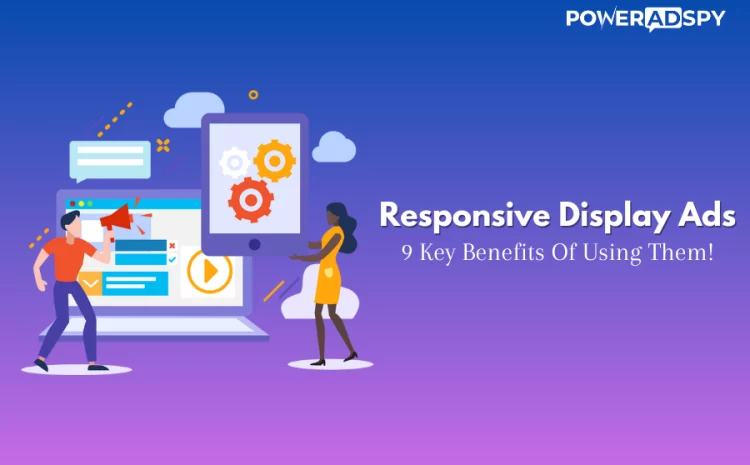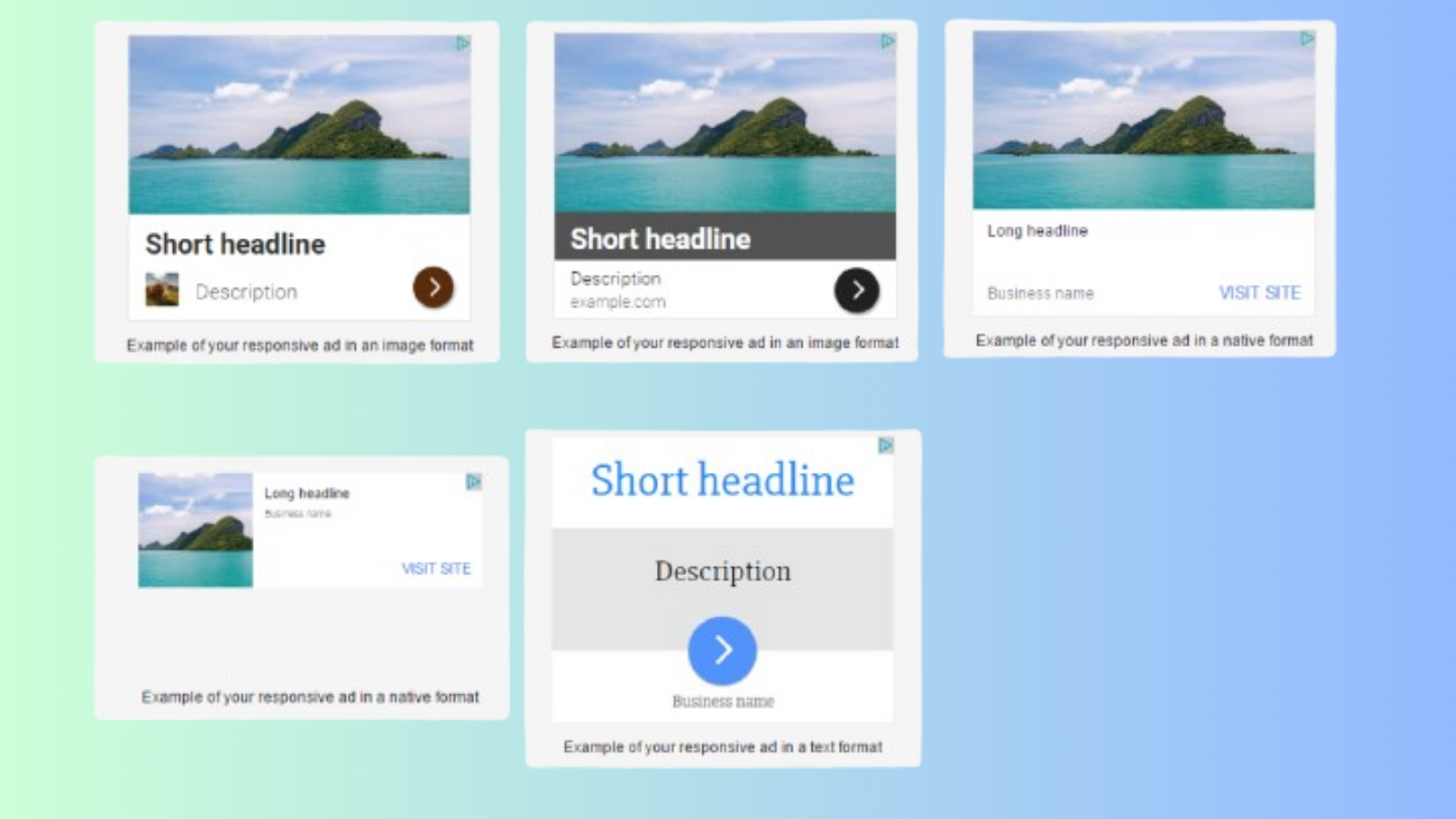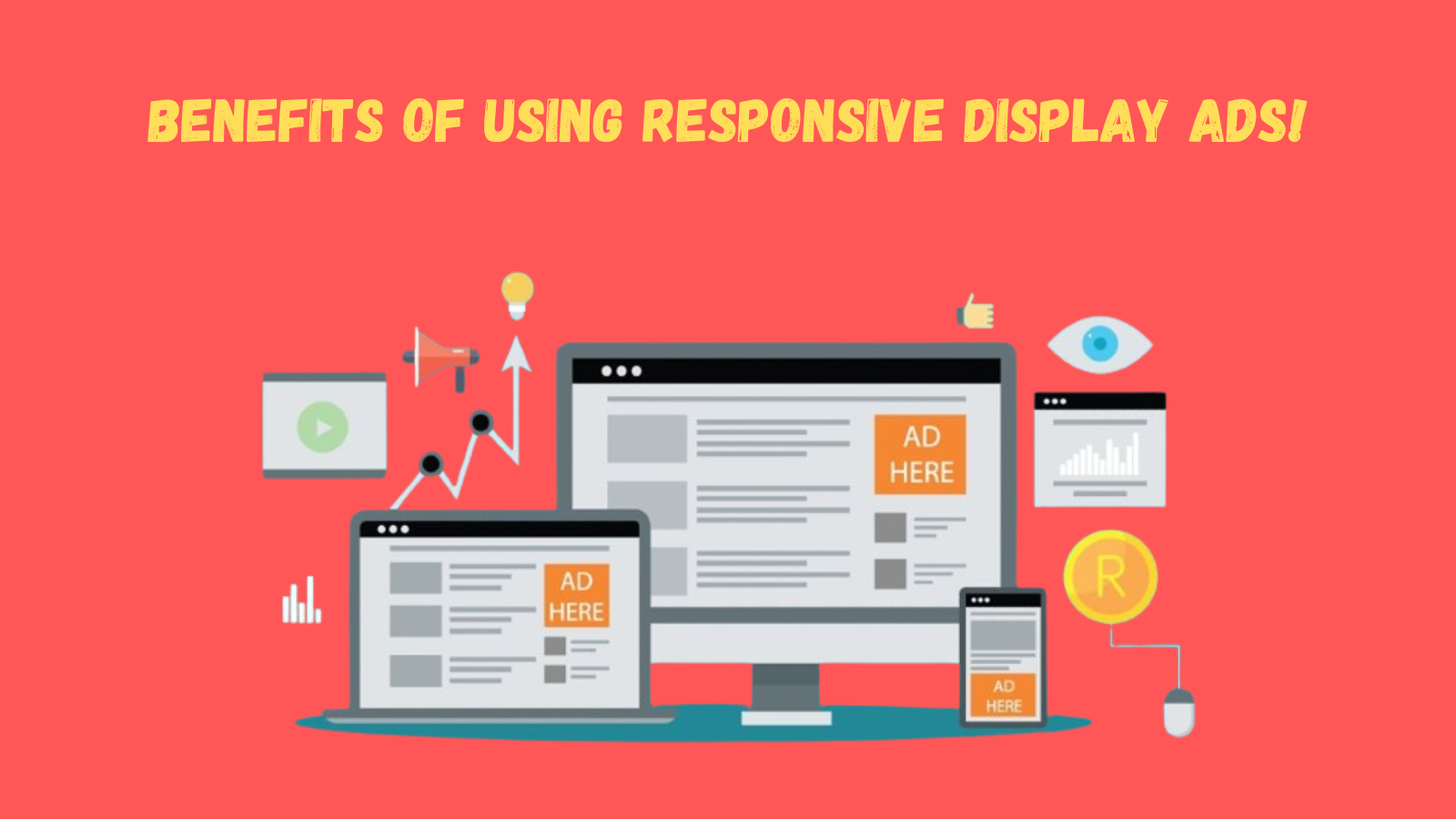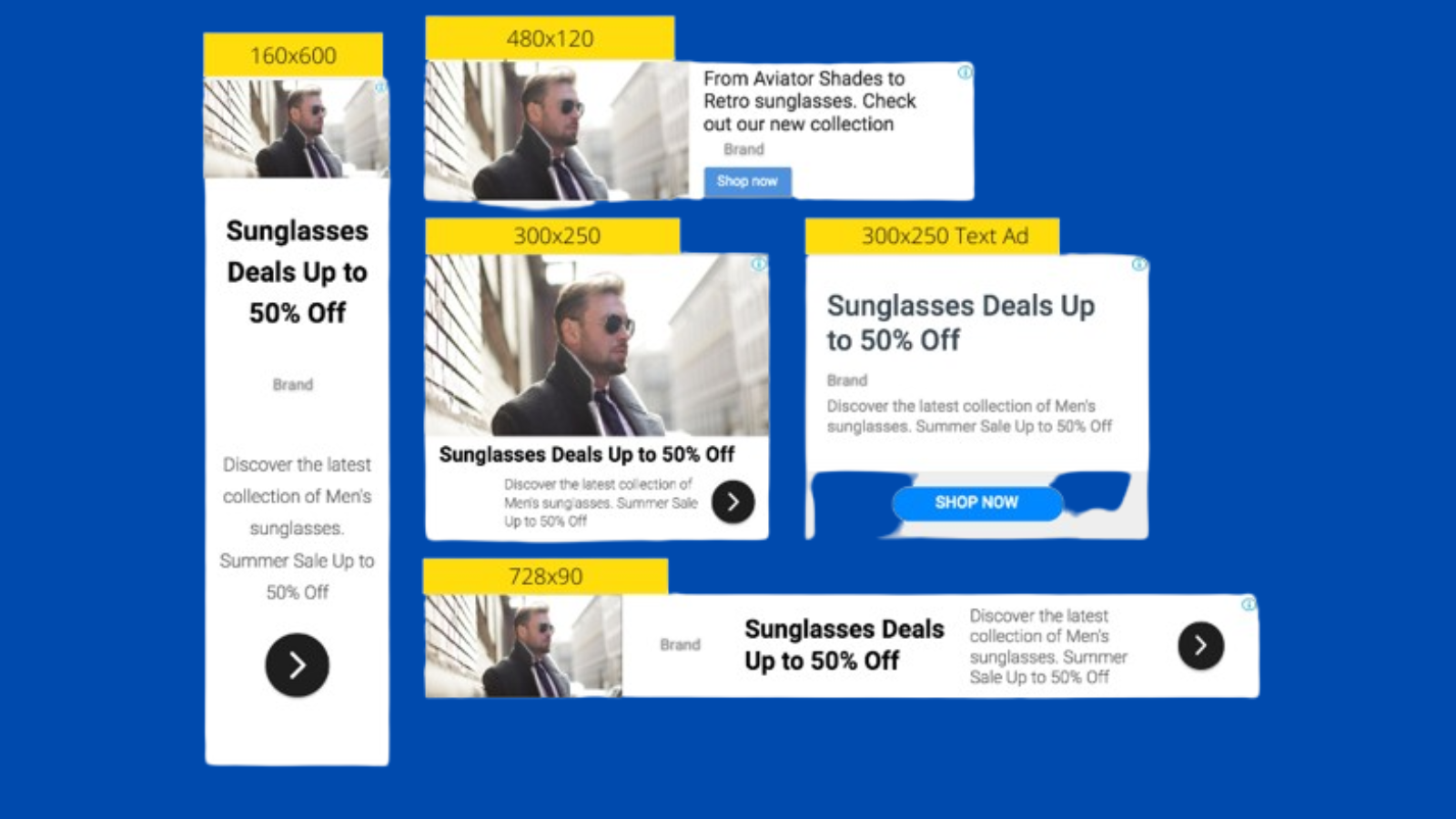9 Key Benefits Of Using Responsive Display Ads!
Imagine you’re walking down a busy street, and every billboard changes its message and appearance to grab your attention. That’s a bit like how responsive display ads work in the digital world!
What do these ads entail? Essentially, they’re digital posters capable of dynamically changing their size, shape, and content depending on their display location. Regardless of whether you’re using a large computer screen or a small smartphone, these ads automatically adapt to fit seamlessly.
Think about it this way: Visualize a conventional online ad as a static billboard – it remains the same size and conveys a consistent message. On the other hand, display responsive ads resemble a series of flexible billboards that adapt to seize your attention, regardless of your browsing location.
With online advertising, responsive display advertising has become feasible. Next time- while browsing online, if you encounter a display ad seamlessly blending into your viewing experience, you might have seen a responsive ad.
In a hurry? Listen to the blog instead!
What Are Responsive Display Ads?
Google responsive display ads are a versatile type of online advertisement that automatically adjusts its size, format, and appearance to fit the available ad space across various websites and devices. Responsive display ads utilize machine learning algorithms to dynamically adapt to the context of each placement, unlike traditional static ads designed with specific dimensions.
These ads often include a mix of images, headlines, descriptions, and logos, giving advertisers various options for each element. The system optimizes ad elements based on user demographics, interests, behavior, and devices.
By utilizing these ads, advertisers can reach a broader audience and improve the effectiveness of their campaigns by delivering tailored messages that resonate with individual users across different platforms and devices.
How google responsive ads work: –
Responsive display ads utilize machine learning to adapt their format, size, and appearance to fit various ad spaces across the Google Display Network. Here’s how they work:
Input Assets: Advertisers provide a variety of creative assets, including images, headlines, descriptions, and logos, to the ad platform.
Dynamic Combination: The ad platform uses machine learning algorithms to generate and test different combinations.
Contextual Analysis: These ad variations would show up on different websites, apps, and devices. And it collects data on user interactions and contextual factors, such as device type, location, and browsing behavior.
Performance Optimization: The platform automatically adjusts the creative elements of the ads based on collected performance data to optimize their effectiveness. For example, it may prioritize ad variations that generate higher click-through rates or conversions.
Adaptation: Responsive display ads dynamically adapt their layout, format, and content to fit the available ad space on different websites and devices. It ensures that the ads maintain a visually appealing and engaging appearance regardless of where they are displayed.
Iterative Improvement: Over time, the machine learning algorithms learn from past performance data and refine their decisions. Thanks to that, it continuously improves the relevance and effectiveness of such ad campaigns.
Overall, responsive display ads provide advertisers with a potent tool to reach their target audience across diverse websites and devices, utilizing Google’s machine-learning capabilities to optimize performance.
Benefits Of Using Responsive Display Ads:
Let us first discuss- what are the key benefits of responsive display ads. So, the answer to this question is their:
Adaptability: It is across various devices and screen sizes. These ads automatically adjust their size, appearance, and format to fit the space available on the website. This flexibility ensures that the ads maintain their visual appeal and effectiveness.
The other benefits of it are:
Rich Media Support: They support various rich media formats, including images, videos, and interactive elements. They enable advertisers to create more engaging and immersive ad experiences.
Campaign management efficiency: They are scalable, allowing advertisers to smoothly scale up their campaigns by creating new ad variations or expand targeting parameters without significant additional effort.
Creative experimentation: Advertisers can effortlessly test different variations of headlines, descriptions, and images within a single responsive display ad, helping to identify the most effective combinations.
Extended reach and exposure: They can increase visibility by appearing across a wide range of websites and apps within Google’s Display Network, reaching users at various touch points throughout their online journey.
Efficient resource allocation: Creating a single responsive display ad can save time and resources compared to designing multiple static ads for different placements and devices.
Google Smart Display Campaigns: They are integrated with machine learning algorithms to optimize ad performance and maximize results.
Personalized messaging and targeting: They allow advertisers to tailor their messaging to different audience segments or stages of the customer journey. They deliver more relevant and compelling content to users.
Cost-Effectiveness: By maximizing ad relevancy and performance, responsive display ads can lower your cost per acquisition (CPA) and increase your overall advertising ROI.
Responsive Display Ads Specs –
Specifications for Responsive Display Ads may vary slightly depending on the platform or advertising network they are utilized on. However, here are some general guidelines and specifications to excel responsive display ads, particularly within Google Ads:
File Types:
- Images: .jpg, .png, .gif
- Logos: .jpg, .png
- HTML5: .zip (for animated HTML5 ads)
Image Dimensions:
- Landscape: 1.91:1 aspect ratio, minimum 600 x 314 pixels
- Square: 1:1 aspect ratio, minimum 300 x 300 pixels
- Vertical: 4:5 aspect ratio, minimum 300 x 375 pixels
Logo Dimensions:
- Square or Landscape: Minimum 128 x 128 pixels
File Size:
- Images: Up to 1.2 MB
- HTML5: Up to 150 KB (compressed .zip file)
Text Specifications:
- Headlines: Up to 5 headlines, each with a maximum of 30 characters.
- Descriptions: Up to 5 descriptions, each with a maximum of 90 characters.
Assets:
- Advertisers provide multiple headlines, descriptions, images, and logos. Google’s machine learning algorithms then dynamically test different combinations of these elements.
Adaptable Aspect Ratios:
- They are designed to automatically adapt to various ad sizes and formats across the Google Display Network.
Compliance:
- All assets must comply with the policies and guidelines of the advertising platform or network where the ads will be displayed.
It’s important to note that these specifications are subject to change and may differ slightly depending on the specific requirements of the advertising platform or network.
Also read:
Simplify Your Strategy: Google Responsive Display Ads Made Easy
How To Excel: Responsive Display Ads For Campaigns
Types of Responsive Display Ads:
Image Ads: Vibrant visuals tailored to fit various ad spaces, captivating audiences with compelling imagery.
Dynamic Ads: Customizable ads that dynamically adjust content based on user behavior and preferences.
Native Ads: Seamlessly integrated ads designed to blend with the surrounding content, enhancing user experience.
Video Ads: Engaging video content optimized for different devices and placements, delivering impactful brand messages.
Text Ads: Concise and compelling text-based ads, perfect for delivering targeted messages and driving conversions.
Animated Ads: Eye-catching animations that grab attention and convey brand messages effectively.
Interactive Ads: Engaging ads that encourage user interaction, fostering a deeper connection with the brand.
Carousel Ads: Multi-image ads that allow users to swipe through a series of images or videos showcasing multiple products or features.
HTML5 Ads: Rich media ads created with HTML5 technology, offering immersive and interactive experiences across devices.
You can also utilize ad spy tools like PowerAdSpy that offer valuable insights and intelligence that can inform your strategy, enhance your creative execution, and drive better results for your responsive display ad campaigns.
PowerAdSpy – An ad intelligence tool
Marketers and advertisers use PowerAdSpy, an effective advertising intelligence tool, to spy on and analyze Facebook and Instagram ads. It provides insights into ad creatives, ad copy, targeting options, and performance metrics of ads running on these social media platforms. With PowerAdSpy, users can discover winning ad strategies, uncover competitor tactics, and gain inspiration for their ad campaigns.
You can utilize it for responsive display ads in the following ways: –
Competitive Intelligence and Strategy Analysis: PowerAdSpy allows you to monitor your competitors’ ad campaigns on Facebook, Instagram, Google, GDN, and other social media platforms. It enables you to monitor the ad campaigns of your competitors. By studying their responsive display ads, you can gain insights into their strategies, creative approaches, and messaging. It can inspire your ad designs and help you identify gaps or opportunities in the market.
Diverse creative insights: You can use PowerAdSpy to get creative inspiration for your ad designs. While exploring it, you can find a wide range of ad creatives across different industries and niches on different ad platforms and networks to gather new ideas for your ads.
Performance benchmarking and analysis: PowerAdSpy also provides performance metrics for the ad campaigns, including engagement insights- likes, shares, and comments along with demographic insights. By benchmarking your responsive display ads against those of your competitors or industry leaders, you can gauge the effectiveness of your campaigns.
Audience Insights and Strategy Development: PowerAdSpy enables viewing the audience targeting parameters. It can provide valuable insights into audience segmentation and targeting strategies that you can incorporate into your responsive display ad campaigns.
It provides valuable insights and inspiration applicable to your broader advertising strategy, encompassing your display advertising efforts.
Wrapping up –
Responsive display ads offer numerous benefits for advertisers seeking to maximize their reach and engagement across various platforms and devices. These ads are adaptable, allowing them to adjust their size, format, and appearance to fit different ad spaces seamlessly. Advertisers can experiment with ad elements and optimize campaigns for effectiveness on a dynamic platform.
By harnessing the advantages of responsive display ads and employing tools like PowerAdSpy, advertisers can improve their advertising strategies, refine their ad creatives, and achieve superior campaign outcomes across multiple online platforms and channels.










